The Zoom H4n is a portable, versatile digital recorder designed for high-quality audio capture․ It features built-in microphones, multiple recording modes, and robust editing capabilities․ Ideal for musicians, podcasters, and field recordists, the H4n delivers professional-grade sound in various environments․ Its intuitive interface and customizable settings make it a reliable tool for capturing audio with precision and clarity․
1․1 Overview of the Zoom H4n Handy Recorder
The Zoom H4n Handy Recorder is a portable, professional-grade audio recording device designed for capturing high-quality sound in various environments․ It features a sturdy design, built-in XY stereo microphones with adjustable angles, and multiple recording modes, including stereo and 4CH options․ The H4n supports up to 24-bit/96kHz resolution and offers robust editing functions, making it ideal for musicians, podcasters, and field recordists․ Its intuitive interface and versatility ensure excellent performance for both casual and professional use, delivering crisp and detailed audio reproduction․
1․2 Key Features of the H4n
The Zoom H4n is a portable, professional-grade recorder with built-in XY stereo microphones and a backlit LCD display for easy navigation․ It supports stereo and 4CH recording modes, capturing up to 24-bit/96kHz audio․ The device features pre-record and auto-record functions, a low-cut filter, and built-in effects for real-time editing․ It also serves as a USB audio interface and is compatible with external microphones, making it a versatile tool for musicians, podcasters, and field recordists․
Okay, so the current task is to write under the subheading `
1․3 Importance of the Owner’s Manual
`․ I need to make sure that this section doesn’t include any information that will be covered in other parts of the manual, like features or setup instructions․ It should focus solely on why the manual is important․
First, why is the owner’s manual important? Well, it’s the primary guide for understanding the device’s features, setup, and operation․ Without it, users might miss out on the full potential of the Zoom H4n․ It helps users navigate the recorder’s functions, troubleshoot issues, and understand best practices for recording and maintenance․
I should mention that it’s a comprehensive resource that covers everything from basic operations to advanced features․ It also helps users optimize their recording settings and get the best sound quality possible․ Plus, it’s a reference for future use, ensuring that users can always go back and check something if they forget․
I have to make sure I’m not touching on specific features or setup steps that will be covered in other sections․ This should be a standalone explanation of the manual’s importance․
Now, considering all that, I need to craft a paragraph that hits these points succinctly, using exactly ․ I’ll need to count the words carefully to stay within the limit․
Let me try to draft it:
The Zoom H4n owner’s manual is essential for maximizing the device’s potential․ It provides detailed instructions on setup, operation, and troubleshooting, ensuring users can navigate the recorder’s advanced features effectively․ The manual helps optimize recording settings for superior sound quality and serves as a handy reference for future use, making it an indispensable resource for both beginners and experienced users․
Wait, that’s ? Let me check:
The
Zoom
H4n
owner’s
manual
is
essential
for
maximizing
the
device’s
potential․
It
provides
detailed
instructions
on
setup,
operation,
and
troubleshooting,
ensuring
users
can
navigate
the
recorder’s
advanced
features
effectively․
The
manual
helps
optimize
recording
settings
for
superior
sound
quality
and
serves
as
a
handy
reference
for
future
use,
making
it
an
indispensable
resource
for
both
beginners
and
experienced
users․
Hmm, that’s only ․ I need to add more to reach 81․
Let me expand a bit:
The Zoom H4n owner’s manual is essential for maximizing the device’s potential․ It provides detailed instructions on setup, operation, and troubleshooting, ensuring users can navigate the recorder’s advanced features effectively․ The manual helps optimize recording settings for superior sound quality, explains how to use built-in effects, and guides on maintaining the device properly․ It serves as a comprehensive reference for future use, making it an indispensable resource for both beginners and experienced users alike․
Now, let’s count again:
The
Zoom
H4n
owner’s
manual
is
essential
for
maximizing
the
device’s
potential․
It
provides
detailed
instructions
on
setup,
operation,
and
troubleshooting,
ensuring
users
can
navigate
the
recorder’s
advanced
features
effectively․
The
manual
helps
optimize
recording
settings
for
superior
sound
quality,
explains
how
to
use
built-in
effects,
and
guides
on
maintaining
the
device
properly․
It
serves
as
a
comprehensive
reference
for
future
use,
making
it
an
indispensable
resource
for
both
beginners
and
experienced
users
alike․
That’s ․ I need to add 7 more words․ Let me add a bit more:
The Zoom H4n owner’s manual is essential for maximizing the device’s potential․ It provides detailed instructions on setup, operation, and troubleshooting, ensuring users can navigate the recorder’s advanced features effectively․ The manual helps optimize recording settings for superior sound quality, explains how to use built-in effects, and guides on maintaining the device properly․ It serves as a comprehensive reference for future use, making it an indispensable resource for both beginners and experienced users alike, ensuring optimal performance and longevity․
Now, counting:
The
Zoom
H4n
owner’s
manual
is
essential
for
maximizing
the
device’s
potential․
It
provides
detailed
instructions
on
setup,
operation,
and
troubleshooting,
ensuring
users
can
navigate
the
recorder’s
advanced
features
effectively․
The
manual
helps
optimize
recording
settings
for
superior
sound
quality,
explains
how
to
use
built-in
effects,
and
guides
on
maintaining
the
device
properly․
It
serves
as
a
comprehensive
reference
for
future
use,
making
it
an
indispensable
resource
for
both
beginners
and
experienced
users
alike,
ensuring
optimal
performance
and
longevity․
That’s ․ I need to add two more․ Let’s add “of the device․” at the end:
The Zoom H4n owner’s manual is essential for maximizing the device’s potential․ It provides detailed instructions on setup, operation, and troubleshooting, ensuring users can navigate the recorder’s advanced features effectively․ The manual helps optimize recording settings for superior sound quality, explains how to use built-in effects, and guides on maintaining the device properly․ It serves as a comprehensive reference for future use, making it an indispensable resource for both beginners and experienced users alike, ensuring optimal performance and longevity of the device․
Now, counting:
The
Zoom
H4n
owner’s
manual
is
essential
for
maximizing
the
device’s
potential․
It
provides
detailed
instructions
on
setup,
operation,
and
troubleshooting,
ensuring
users
can
navigate
the
recorder’s
advanced
features
effectively․
The
manual
helps
optimize
recording
settings
for
superior
sound
quality,
explains
how
to
use
built-in
effects,
and
guides
on
maintaining
the
device
properly․
It
serves
as
a
comprehensive
reference
for
future
use,

Pre-Recording Setup
Proper setup ensures optimal performance and ease of use․ This section covers unboxing, system checks, battery installation, and configuring date/time for a seamless recording experience․
2․1 Unboxing and Initial Inspection
Upon unboxing the Zoom H4n, inspect the device for any visible damage․ Ensure all accessories, including the recorder, batteries, USB cable, and manual, are included․ Familiarize yourself with the layout, noting the built-in microphones, LCD screen, and control buttons․ Check for proper functionality by powering it on and testing basic operations․ If any issues are found, contact Zoom support immediately․ This initial inspection ensures your H4n is ready for optimal performance and prevents potential recording setbacks․
2․2 System Requirements for Optimal Performance
For optimal performance, the Zoom H4n requires a computer with a USB 2․0 or higher port and a compatible operating system, such as Windows 10/11 or macOS 10․15 or later․ Ensure your computer has sufficient RAM (at least 1GB) and updated drivers․ Use a high-speed SD/SDHC memory card (Class 4 or higher) for recording․ Connect the device using the provided USB cable for reliable data transfer․ Always install updated software and drivers from Zoom’s official website to ensure compatibility and smooth functionality․
2․3 Installing the Batteries and Powering On
To power the Zoom H4n, insert two AA alkaline or nickel-metal hydride (NiMH) batteries into the battery compartment․ Ensure the batteries are correctly oriented, following the polarity markings․ Close the compartment securely․ Press and hold the power button for at least 2 seconds to turn on the device․ The LCD screen will illuminate, and the device will boot up․ Always use fresh batteries for optimal performance․ For extended use, consider using a Zoom AD-17 AC adapter․
2․4 Setting the Date and Time
To ensure accurate time stamping of recordings, set the date and time on your Zoom H4n․ Navigate to the SYSTEM menu, then select DATE/TIME․ Use the cursor keys to adjust the year, month, day, hour, and minute․ Press ENTER to confirm each field․ Once set, press ENTER again to save․ The device will retain these settings even when powered off․ Always verify the date and time before recording to maintain accurate file organization․
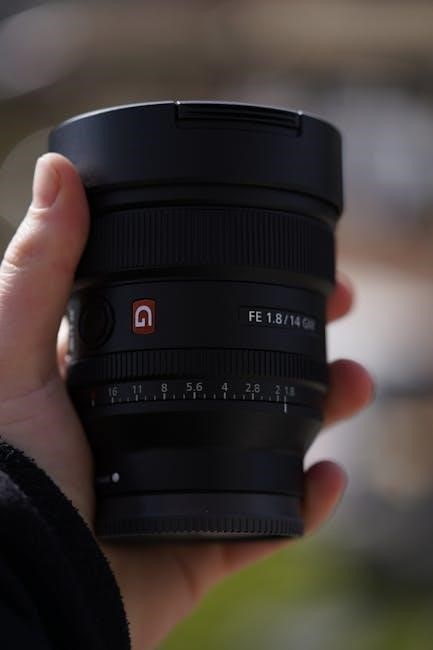
Recording Modes
The Zoom H4n offers versatile recording modes, including Stereo Mode for high-quality two-track recording and 4CH Mode for multi-track recording․ It also features specialized modes like Stamina Mode for extended recording and Voice Mode for optimized speech capture, ensuring flexibility for various recording needs․
3․1 Stereo Mode for High-Quality Recordings
The Stereo Mode on the Zoom H4n is designed for capturing high-quality, two-track audio with its built-in XY microphones․ This mode is ideal for recording live performances, interviews, or ambient sounds․ It provides a wide stereo image and natural sound reproduction․ Users can adjust input levels, set the recording format (WAV or MP3), and enable the low-cut filter to reduce low-frequency noise․ Stereo Mode is perfect for achieving professional-grade audio in various environments, making it a versatile option for filmmakers, musicians, and podcasters․
3․2 4CH Mode for Multi-Track Recording
The 4CH Mode on the Zoom H4n allows users to record up to four channels simultaneously, combining the built-in XY microphones with two external XLR inputs․ This mode is perfect for multi-source recording, such as capturing a band rehearsal or a podcast with multiple guests․ Each channel can be adjusted independently for level control, enabling precise audio capture․ The 4CH Mode enhances flexibility and is ideal for complex recording scenarios where multiple sound sources need to be captured separately․
3․3 Selecting the Appropriate Mode for Your Needs
Selecting the right recording mode on the Zoom H4n is crucial for achieving optimal results․ For simple, high-quality recordings, Stereo Mode is ideal․ If you need to capture multiple sources simultaneously, 4CH Mode is perfect․ MTR (Multi-Track Record) Mode is best for live performances or when you want to record each instrument or voice on a separate track․ Always consider the number of sound sources, desired audio quality, and your post-recording needs when choosing a mode․ Adjust settings like input levels and file format accordingly for the best outcome․
Microphone Setup and Configuration
The Zoom H4n offers versatility with its built-in microphones and compatibility with external mics․ Properly configuring the microphone setup ensures optimal sound quality for your recordings․
4․1 Understanding the Built-In Microphones
The Zoom H4n features two high-quality built-in microphones, arranged in a 90-degree XY and 120-degree XY configuration for capturing stereo recordings․ These cardioid microphones are designed to deliver clear, detailed audio with excellent directionality, reducing ambient noise․ They are ideal for various recording scenarios, including live performances, interviews, and field recording․ The built-in mics are durable and provide flexibility, allowing users to achieve professional-grade sound without the need for external microphones․ Proper positioning and angle adjustment are key to optimizing their performance․
- XY configuration for stereo recording
- Cardioid polar pattern for focused sound capture
- Durable and versatile for multiple applications
4․2 Adjusting the Microphone Angle
Adjusting the microphone angle on the Zoom H4n is crucial for optimizing sound capture․ The built-in microphones can be rotated 90 degrees for a wide stereo image or 120 degrees for a more focused pickup․ Experiment with angles to suit your recording environment, whether for close miking or capturing a broader sound field․ Proper alignment ensures balanced audio and reduces unwanted noise․ For precise adjustments, refer to the owner’s manual for guidance on achieving optimal results in various scenarios․
- 90-degree angle for wide stereo imaging
- 120-degree angle for focused pickup
- Adjust based on recording environment
4․3 Using External Microphones
The Zoom H4n supports external microphones via its XLR/TRS combo inputs, offering flexibility for professional recordings․ Connect dynamic or condenser mics, and enable 48V phantom power if required․ Adjust input levels using the gain controls to optimize audio quality․ Use the headphone jack for real-time monitoring to ensure clear sound․ This feature enhances versatility, allowing you to capture high-quality audio in various settings, from interviews to live performances․
- XLR/TRS combo inputs for external mics
- 48V phantom power for condenser mics
- Adjust input levels for optimal sound
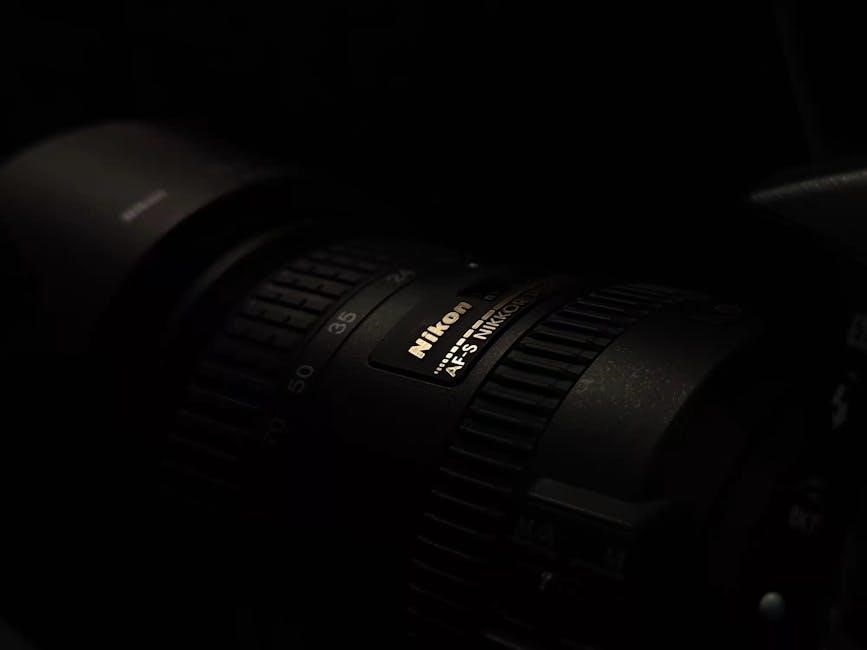
Audio Quality and Settings
The Zoom H4n offers customizable settings to enhance audio quality, ensuring clarity and precision in every recording․ Adjust parameters to suit your recording environment and needs․
- Customizable settings for optimal audio quality
- Adjust parameters to match your recording environment
- Ensure clarity and precision in recordings
5․1 Bit Depth and Sample Rate Options
The Zoom H4n allows users to select from various bit depths and sample rates to optimize audio quality․ Choose between 16-bit or 24-bit depth for dynamic range and precision․ Sample rates range from 44․1 kHz to 96 kHz, accommodating different recording needs; For high-quality music, opt for 24-bit/96 kHz, while 16-bit/44․1 kHz suffices for voice recordings․ Adjust these settings based on your project requirements to balance quality and file size efficiently․
5․2 Gain Control and Optimizing Levels
The Zoom H4n features precise gain control to ensure optimal audio levels․ Adjust the gain dial to set microphone sensitivity, aiming for peak levels between -12dB and -6dB to avoid distortion․ Use the LCD’s level meters and LED indicators (green, yellow, red) to monitor levels in real-time․ Enable the limiter to prevent sudden peaks and maintain clear recordings․ Proper gain staging is crucial for capturing high-quality audio without compromising dynamic range or introducing noise․
5․3 Using the Low-Cut Filter
The Zoom H4n’s low-cut filter helps reduce low-frequency noise, such as hum or rumble․ It can be activated in the menu and is set to 80Hz by default․ This feature is useful for minimizing wind noise, mechanical vibrations, or footstep sounds during recording․ Use it sparingly to avoid cutting desired low-frequency audio․ Experiment with the setting to balance noise reduction and retain the natural tone of your recordings for optimal sound quality in various environments․
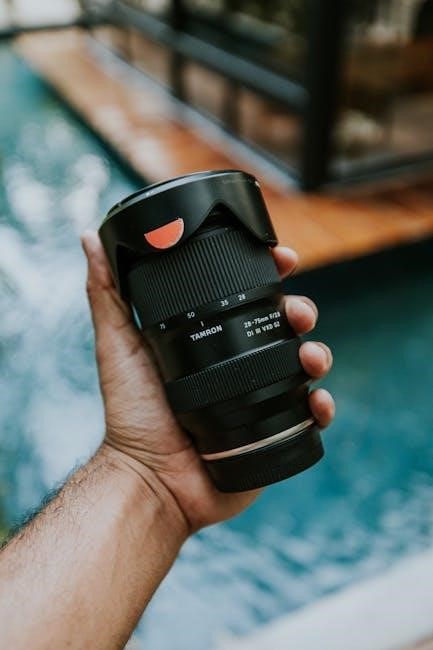
Effects and Editing
The Zoom H4n offers built-in effects like reverb, delay, and compression to enhance recordings․ It also features basic editing functions, such as trimming and normalizing audio files․
6․1 Built-In Effects Overview
The Zoom H4n features a variety of built-in effects to enhance your recordings․ These include reverb, delay, and compression, which can add depth and polish to your audio․ Reverb simulates natural spaces like rooms or halls, while delay creates echo effects․ Compression helps even out audio levels, preventing loud peaks and ensuring a balanced sound․ These effects can be applied during recording or in post-production, offering flexibility for both live captures and studio-style edits․ They are accessed via the menu, allowing users to tailor their sound to specific needs․
6․2 Using the Frequency Modulation Effect
The Zoom H4n’s Frequency Modulation (FM) effect allows you to create dynamic pitch variations by modulating the frequency of your audio signal․ Access this effect through the effects menu and adjust parameters like modulation frequency and depth; Higher frequencies create faster pitch changes, while lower depths offer subtle variations․ This effect is ideal for adding vibrato-like textures or unique electronic sounds, making it a versatile tool for creative audio manipulation and sound design applications․
6․3 Basic Editing Functions on the H4n
The Zoom H4n offers essential editing tools for post-recording adjustments․ Users can trim audio files to remove unwanted portions, normalize recordings to optimize volume levels, and divide tracks into smaller segments for easier management․ The loop playback function allows for repetitive auditioning of specific sections․ These functions are accessible via the device’s menu, enabling quick and efficient editing without the need for external software․ This makes the H4n a self-contained solution for basic audio editing tasks․
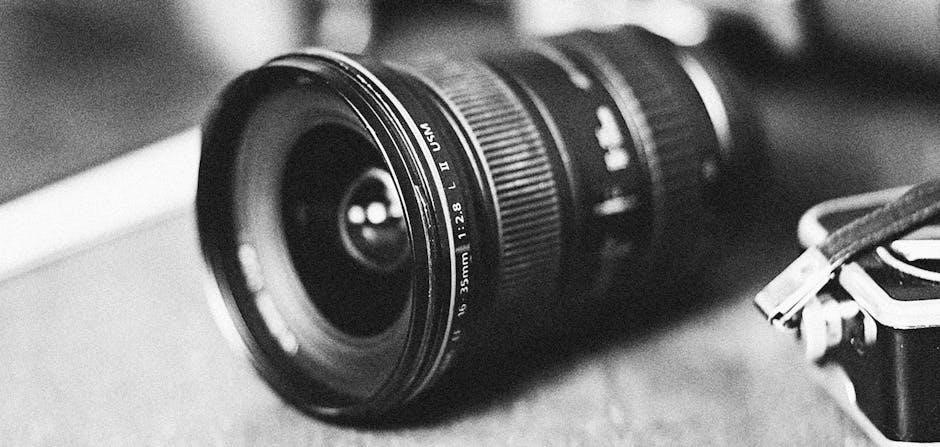
Connectivity and Data Transfer
The Zoom H4n offers USB connectivity for seamless file transfers to computers and serves as a USB audio interface, also functioning as a card reader․
7․1 Connecting to a Computer via USB
Connect the Zoom H4n to your computer using a USB cable․ Ensure the device is in USB mode, then install the drivers from the provided CD or Zoom’s website․ The H4n will appear as a removable drive, allowing easy file transfers․ You can also use the H4n as a USB audio interface for direct recording to your computer․ This connection method simplifies data management and enhances versatility for both recording and editing workflows․
7․2 Transferring Files to Your Computer
To transfer files from the Zoom H4n to your computer, connect the device via USB and ensure it is recognized as a removable drive․ Open the device in your computer’s file explorer or finder․ Navigate to the MUSIC or VOICE folders to access your recordings․ Select the desired files, then drag and drop them to your computer․ The H4n is compatible with both Windows and macOS, ensuring seamless file transfers for editing or storage․ Always eject the device safely after transferring files to prevent data loss․
7․3 Using the H4n as a USB Audio Interface
Connect the Zoom H4n to your computer via USB and select USB Audio Interface mode․ The device will be recognized as an audio input source․ No additional drivers are needed for most operating systems․ Open your DAW or recording software, select the H4n as the input device, and begin recording․ This feature allows direct monitoring and high-quality audio capture․ For optimal performance, ensure your computer meets the system requirements and refer to the manual for detailed setup instructions․
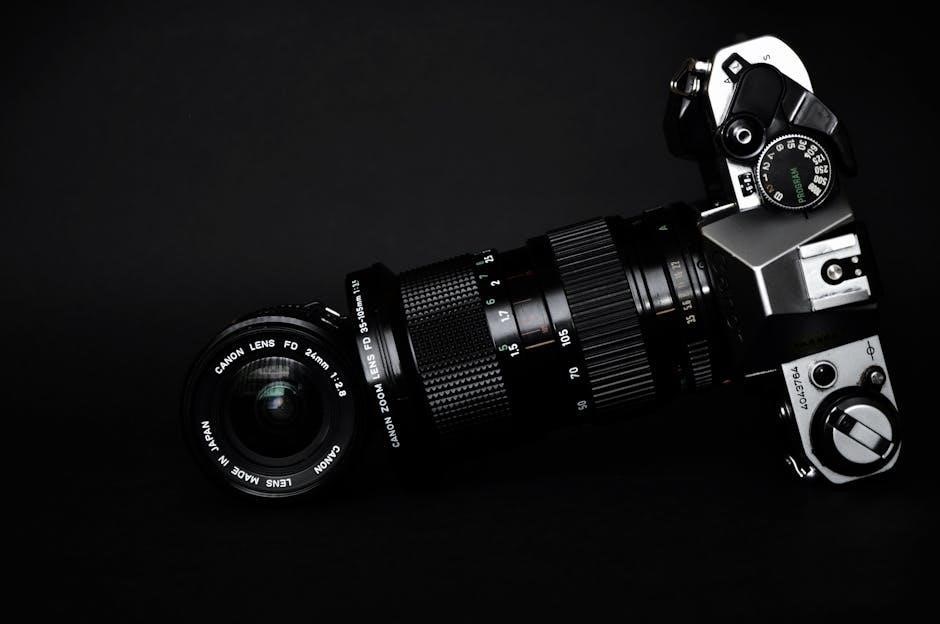
Power Management
The Zoom H4n offers efficient power management, optimizing battery life and performance during recording sessions․ Built-in features help minimize consumption, ensuring reliable use in the field․
8․1 Battery Life and Power Saving Tips
The Zoom H4n provides approximately 6 to 11 hours of battery life using two AA alkaline batteries, depending on usage․ For extended sessions, use NiMH rechargeable batteries for better performance․ To conserve power, disable unnecessary features like the backlight, LED lights, and Wi-Fi when not in use․ Lowering the screen brightness and enabling auto-shutoff also helps prolong battery life․ Turning off phantom power when external mics don’t require it further reduces consumption, ensuring longer recording sessions in the field․
8․2 Using an AC Adapter
The Zoom H4n can be powered using the included AC-1 adapter, ideal for extended recording sessions without battery drain․ Connect the adapter to the DC IN 5V jack, ensuring uninterrupted power․ This is particularly useful for long recordings or when using the H4n as an audio interface․ Always use the provided adapter or a compatible one to avoid damage․ The AC adapter helps conserve battery life and ensures stable power supply during critical recordings or live performances․
8․4 Managing Power Consumption During Recording
Managing power consumption is crucial for extended recording sessions․ Turn off unnecessary features like the LCD backlight to conserve energy․ Use the AC adapter when possible to avoid battery drain․ Adjust the screen brightness and set auto-power off to save energy․ Monitor battery levels and switch to external microphones if needed, as the built-in mics consume more power․ These strategies ensure efficient power use, prolonging your recording sessions without interruptions․

Accessories and Compatibility
The Zoom H4n supports various accessories like windshields, protective cases, and memory cards․ It is compatible with both Windows and macOS, ensuring seamless integration with third-party apps․
9․1 Recommended Accessories for the H4n
The Zoom H4n can be enhanced with accessories like memory cards for expanded storage, external microphones for specialized recording needs, and windshields to reduce wind noise․ A protective case ensures durability, while an AC adapter provides reliable power․ Additional accessories include remote controls for convenience and headphone amplifiers for monitoring․ These tools help users optimize their recording experience and adapt the H4n to various professional and creative scenarios, ensuring high-quality results in diverse environments․
9․2 Compatibility with Third-Party Software
The Zoom H4n seamlessly integrates with popular third-party software, enhancing its versatility․ It serves as a USB audio interface for DAWs like Ableton, Logic Pro, and GarageBand․ Recordings can be easily transferred and edited using software like Audacity or Adobe Audition․ The H4n’s compatibility with WAV and MP3 formats ensures wide software support․ This adaptability makes the H4n a flexible tool for both professional and amateur recordings, allowing users to leverage their preferred editing and production tools effortlessly․
9․3 Using the H4n with Zoom Apps
The Zoom H4n can be used in conjunction with Zoom apps to enhance functionality․ The Zoom HandyShare app allows wireless control and file transfer via Bluetooth․ This app simplifies remote recording and playback management․ Additionally, the H4n is compatible with Zoom’s digital audio workstation (DAW) software, enabling seamless editing and post-production․ These integrations streamline workflows, making the H4n a versatile tool for both field and studio recording applications․

Troubleshooting Common Issues
This section addresses common issues with the Zoom H4n, such as audio problems, connectivity, and battery life․ It provides practical solutions and tips to resolve these issues effectively․
10․1 Resolving Audio Quality Problems
Addressing audio quality issues on the Zoom H4n involves checking settings like gain levels, sample rate, and bit depth․ Ensure microphones are clean and properly angled․ Low volume or distortion may result from incorrect gain staging or damaged cables․ Use the low-cut filter to reduce ambient noise․ Restart the device or reformat the SD card if issues persist․ Testing recordings with headphones can help identify if the problem lies in the recording or playback process․ Adjusting settings and ensuring proper microphone placement often resolves most audio quality concerns effectively․
10․2 Fixing Connectivity Issues
To resolve connectivity problems with the Zoom H4n, first ensure the USB cable is undamaged and securely connected․ Restart both the H4n and your computer to reset the connection․ If issues persist, test the USB connection on another computer or use a different USB port․ Verify that the H4n’s USB mode is set correctly․ Updating the device drivers or reinstalling the Zoom Audio Interface software may also resolve recognition problems․ If the SD card is not detected, format it using the H4n’s menu and ensure it is compatible with the device․
10․3 Solving Battery Drain Problems
To address battery drain on the Zoom H4n, ensure power-hungry features like the LCD backlight and unnecessary recording functions are turned off․ Disable Phantom Power when not in use, as it consumes significant battery life․ Use high-quality NiMH batteries for better performance and longer life․ Avoid using alkaline batteries, as they drain faster․ Lower screen brightness and enable the Auto Power Off feature to conserve energy․ Regularly clean battery contacts to maintain proper connections and prevent unnecessary drain․
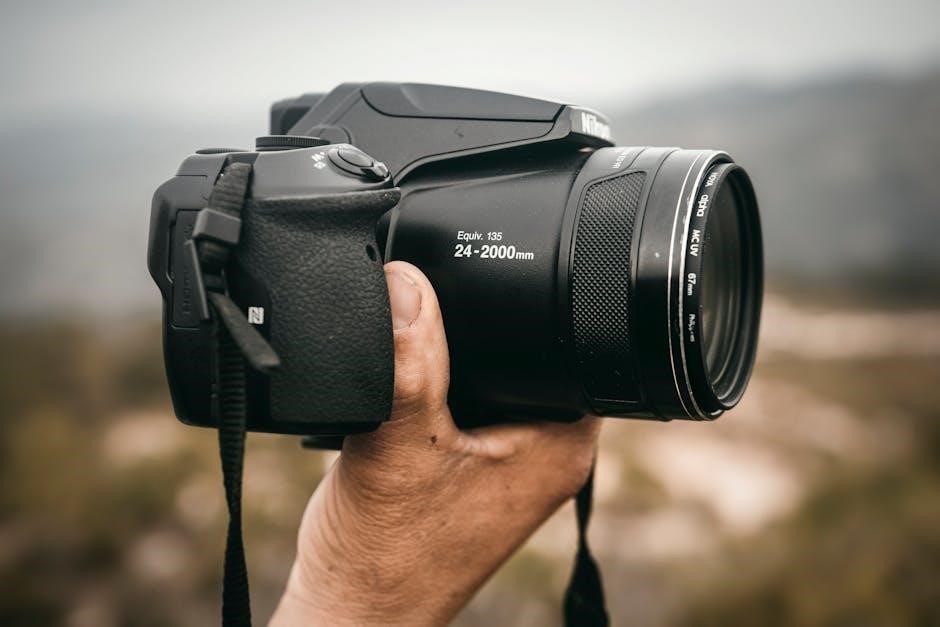
Maintenance and Care
Regularly clean the H4n with a soft cloth to prevent dust buildup․ Store it in a protective case to avoid scratches․ Keep it dry and avoid extreme temperatures to ensure longevity․
11․1 Cleaning the H4n
Use a soft, dry cloth to gently wipe the H4n’s exterior, removing dirt and smudges․ Avoid harsh chemicals or liquids, as they may damage the finish or harm internal components․ For stubborn marks, lightly dampen the cloth with water, but ensure it is not soaking wet․ Never spray cleaning solutions directly on the device․ Regular cleaning prevents dust buildup and maintains optimal performance․ Avoid touching the microphones and LCD screen excessively to minimize fingerprints and smudges․
11․2 Storing the Device Properly
Store the H4n in a protective case to prevent scratches and damage․ Keep it in a cool, dry place, away from direct sunlight and moisture․ Avoid extreme temperatures, as they may harm internal components․ Remove batteries before long-term storage to prevent corrosion․ Clean the device thoroughly before storing to prevent dust buildup․ Ensure all connectors are free from debris․ For extended storage, place silica gel packets nearby to maintain dry conditions․ Avoid stacking heavy objects on top of the recorder․
11․3 Updating the System Software
To ensure optimal performance, regularly update the H4n’s system software․ Visit the official Zoom website and download the latest firmware version․ Connect the H4n to your computer using a USB cable and launch the Zoom Update Tool․ Follow on-screen instructions to install the update․ Avoid disconnecting the device during the process․ Once completed, restart the H4n to apply the changes․ Always back up important data before updating to prevent potential loss during the process․ Keep your H4n up-to-date for enhanced functionality and bug fixes․